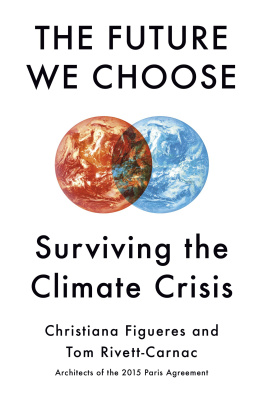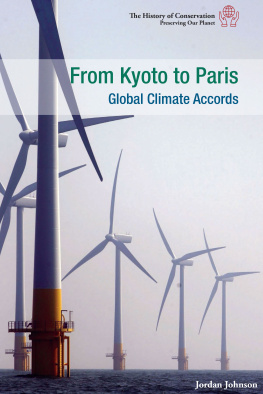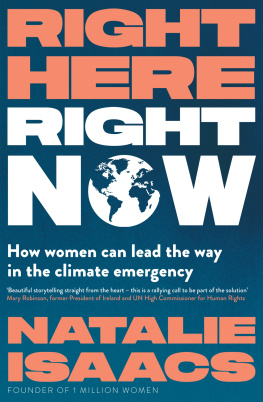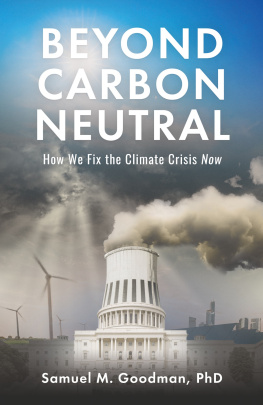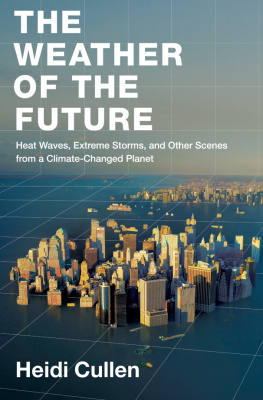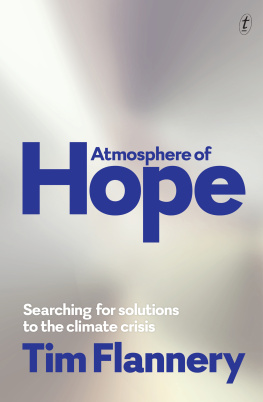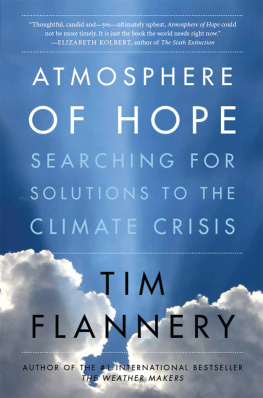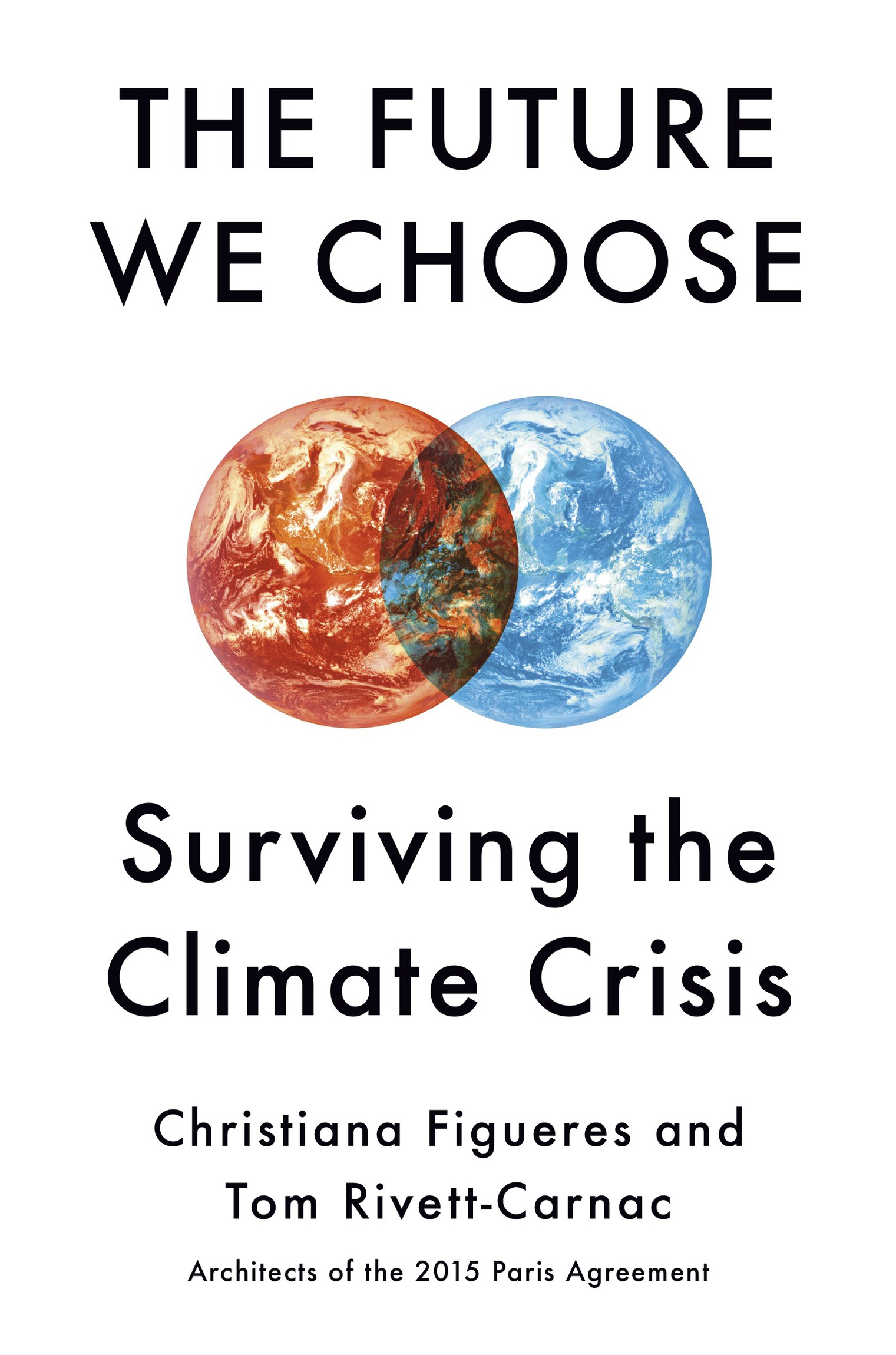PUBLISHED BY ALFRED A. KNOPF
All rights reserved. Published in the United States by Alfred A. Knopf, a division of Penguin Random House LLC, New York, and distributed in Canada by Penguin Random House Canada Limited, Toronto.
Knopf, Borzoi Books, and the colophon are registered trademarks of Penguin Random House LLC.
but to be fearless when facing them.
AUTHORS NOTE
We are good friends and fellow travelers on this planet, but we differ in many ways. We were born in two different geological periods. Christiana was born in 1956, at the end of the twelve-thousand-year Holocene epoch, when a stable climate allowed humanity to flourish, and Tom in 1977, when the Anthropocene epochcharacterized by humanitys destruction of the very conditions that allowed us to thrivebegan.
We come from opposite sides of the geopolitical map; Christiana from Costa Rica, a small developing country that has long been a model of economic growth in harmony with nature, and Tom from the UK, the worlds fifth-largest economy and the birthplace of the Industrial Revolution and its reliance on coal.
Christiana comes from a deeply political family, immigrants to Costa Rica on both sides. Her father was three times president of the country and is considered the father of modern Costa Rica. Not only did he initiate some of the most far-reaching environmental policies in the world, he remains the only head of state ever to have abolished a national army. Tom stems from a family steeped in British history and rooted in the private sector. He is a direct descendant of the founding chairman of the East India Company when it was the only company in history to have a private army. Toms earliest memories are of looking for oil with his petroleum geologist father.
Christiana is the mother of two adult daughters, and Tom is the father of a daughter and a son, both under age ten.
We could have had nothing in common, but we deeply share that which is most important: concern for the future of our children and yours. In 2013, we decided to work together to forge a better world for all children.
From 2010 to 2016, Christiana was Executive Secretary of the United Nations Framework Convention on Climate Change, the organization tasked with guiding the response of all governments to climate change. Assuming the highest responsibility for negotiations right after the dramatic debacle of the 2009 Copenhagen climate change conference, Christiana refused to accept that a global agreement was impossible.
In 2013, she heard about Tom, who was then president and CEO of the Carbon Disclosure Project U.S.A. and a former Buddhist monk. Intrigued by his unusual combination of experiences, Christiana asked him to join her in New York City to discuss his becoming her Senior Political Adviser.
At the end of a walk around Manhattan that took the better part of the day, Christiana turned to Tom and said, Its clear to me that you have none of the experience necessary for this job. But you have something far more important: the humility to foster collective wisdom, and the courage to work within a complexity that is beyond any mapping.
With that, she invited him to join the UN effort to advance the negotiations for the Paris Agreement as her chief political strategist. He designed and led the largely covert Groundswell Initiative, which mobilized support for the ambition of the agreement from a wide range of stakeholders outside of national governments. A few years later the most far-reaching international agreement on climate change ever attempted was finally achieved.
When the green gavel came down at 7:25 p.m. on December 12, 2015, adopting the Paris Agreement, five thousand delegates who had been holding their breath for hours jumped out of their seats in ecstatic delight, in celebration of the historical breakthrough. One hundred and ninety-five nations had just unanimously adopted an agreement to guide their economies for the next four decades. A new global pathway had been charted.
But pathways are valuable only if they are used. Humanity has procrastinated for far too long on climate changenow we have to walk the path, or rather we have to run it. This book maps the route of that run, and we hope you will run alongside us.
Join us at www.GlobalOptimism.com
INTRODUCTION
The Critical Decade
The world is on fire, from the Amazon to California, from Australia to the Siberian Arctic. The hour is late, and the moment of consequence, so long delayed, is now upon us. Do we watch the world burn, or do we choose to do what is necessary to achieve a different future?
Who we understand ourselves to be determines the choice we will make. That choice determines what will become of us. The choice is both simple and complex, but above all it is urgent.
In Washington, D.C., at ten a.m. on a Friday, a twelve-year-old girl marches with her friends, holding up a hand-painted sign of the Earth enveloped by red flames. In London, grown-up demonstrators dressed in black, wearing riot police headgear, form a human chain blocking traffic at Piccadilly Circus, as others glue themselves to the pavement in front of the headquarters of BP. In Seoul, South Korea, the streets teem with elementary schoolchildren sporting multicolored backpacks and carrying banners that say CLIMATE STRIKE in English, for the benefit of the media. In Bangkok, hundreds of teenage students take to the streets. With firm resolve and heavy hearts, they walk behind their defiant leader, an eleven-year-old girl carrying a sign: THE OCEANS ARE RISING AND SO ARE WE .
All over the world, millions of young peopleinspired by Greta Thunberg, the teenage girl who began a lone protest in front of the Swedish parliamentare engaging in civil disobedience to draw attention to climate change. Students understand the scientific projections and are terrified about the diminished quality of life on their horizon. They demand decisive action now. They are helping to raise the level of outrage about the insufficiency of our efforts to address the crisis, and they have been joined by scientists, parents, and teachers. From the quest for independence in India to the civil rights movement in the United States, civil disobedience has erupted when a reigning injustice became intolerable, as we are now seeing with climate change. Unacceptable generational injustice and a deplorable lack of solidarity with the vulnerable have opened the floodgates of protest. Those who will be most affected have taken to the streets. Their anger is energy that we desperately need. It can propel a wave of defiance against the status quo and catalyze the ingenuity needed to realize new possibilities.
These protests should come as no surprise. We have known about the possibility of climate change since at least the 1930s and have been certain since 1960, when geochemist Charles Keeling measured CO2 in the Earths atmosphere and detected an annual rise.

